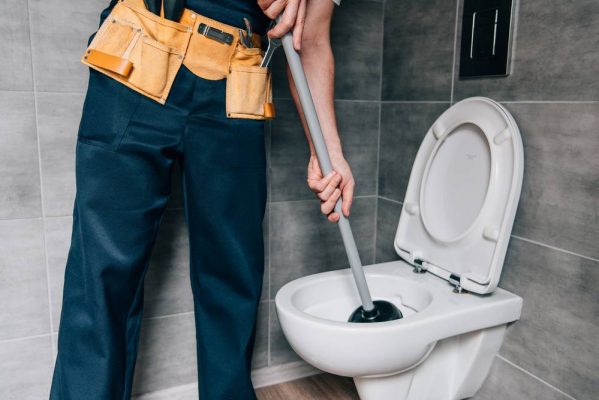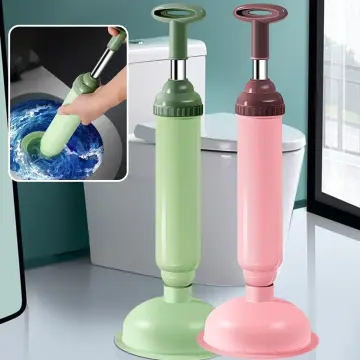Tips to Properly Apply Plunger and Drain Cleaner: Professional Guidance
Tips to Properly Apply Plunger and Drain Cleaner: Professional Guidance
Blog Article
This great article underneath pertaining to How to Unclog Your Sink with a Plunger is quite captivating. Read it for yourself and decide what you think about it.

Intro
Appropriate maintenance of household drains pipes is crucial for stopping blockages and guaranteeing smooth water circulation. Among the key devices in every house owner's toolkit is the plunger, along with different drain cleansers designed to take on persistent obstructions efficiently. This write-up checks out how to utilize plungers and drain cleaners successfully to maintain your drains pipes streaming openly.
Section 1: Recognizing Bettors
Types of Plungers
There are several kinds of bettors available, each developed for different kinds of drains and blocks. The most typical types include cup plungers, flange plungers, and accordion bettors.
Just How Plungers Job
Bettors service the principle of creating pressure and suction to displace obstructions. When appropriately applied over a drain, they develop a vacuum cleaner that can pull out debris or separate obstructions.
Choosing the Right Bettor
Choosing the best bettor depends upon the type of drainpipe and the nature of the blockage. Mug plungers are optimal for sinks and bathtubs, while flange plungers are much better matched for bathrooms because of their design.
Usual Blunders with Plungers
Avoiding these blunders makes sure efficient plunging: improper seal around the drainpipe, inadequate pressure, and not clearing surrounding particles.
Section 2: Making Use Of Plungers Efficiently
Prep work
Before plunging, make certain the plunger covers the drainpipe totally and forms a tight seal. Clear any visible debris around the drainpipe opening.
Technique
Beginning with mild diving activities to build suction. Rise pressure slowly, utilizing a constant rhythm. Repeat as necessary until the drain clears.
Troubleshooting Tips
If plunging does not function, attempt changing the seal, applying petroleum jelly for a far better seal, or making use of a various kind of plunger.
Area 3: Comprehending Drain Cleaning Company
Sorts Of Drain Cleaners
Drain pipes cleaners can be chemical or chemical. Chemical cleansers use solid chemicals to dissolve obstructions, while enzymatic cleansers utilize all-natural enzymes to break down raw material.
How Drainpipe Cleaners Work
Chemical cleansers react with obstructions to liquify them, while chemical cleaners break down organic products like hair and oil without harming pipelines.
Safety and security Factors to consider
Always put on handwear covers and eye protection when making use of chemical drainpipe cleaners. Make certain appropriate ventilation and adhere to producer guidelines meticulously.
Eco-Friendly Alternatives
Think about using vinegar and baking soft drink or enzyme-based cleaners for green choices that are more secure for pipelines and the setting.
Section 4: Making Use Of Drainpipe Cleaners Properly
Application Techniques
Pour chemical cleansers straight right into the drain opening. Enable them to help the recommended time prior to purging with warm water. Enzymatic cleaners need to rest overnight.
Safety measures
Prevent mixing various types of cleaners, as this can generate poisonous fumes. Never use chemical cleansers together with a plunger, as spilling can take place.
Dealing With Persistent Clogs
For consistent clogs, think about making use of a plumbing snake or calling a specialist plumbing to stop damage to pipes.
Final thought
Finally, understanding exactly how to utilize bettors and drainpipe cleaners properly is vital for keeping healthy and balanced pipes systems. By picking the right devices and methods, homeowners can tackle small blockages and prevent significant pipes issues down the line.
How to Use a Plunger to Unclog a Drain
The humble plunger is a simple yet effective tool for breaking clogs in sinks, tubs and toilets. This handy tool is easy to use. You can make the most of its power if you understand how it works. Ready to dive in? Here’s what you need to know.
Safety First!
Never use a plunger with drain chemicals. Water will splash as you work, and the chemicals can spatter, burning skin and eyes. It’s a good idea to use rubber gloves and wear safety goggles when you work on a clog.
Choose the Right Tool for the Job
Plungers come in two different styles. Sinks, bathtubs and showers require a cup plunger. Like its name suggests, the rubber end is shaped like a cup. Use a flange plunger on toilets. These plungers have a rubber funnel extending from the cup. A plunger needs to be big enough to cover the drain.
Ready, Set, Plunge!
Coat the rim: Coat the plunger rim with petroleum jelly. This helps make a better seal.
Block outlets: Hold a wet rag over nearby outlets such as the overflow vent or the drain in a second sink.
Release air: Insert the plunger at an angle into the water. Water will displace air in the cup. A water-filled cup is more forceful than one filled with air.
Keep the plunger upright: Hold the plunger perpendicular to the drain. Use fast, forceful strokes, but make the first stroke gentle. The first stroke can create a splash if the cup still contains air. Thrust the plunger 15 to 20 times.
Snap off the plunger: The final stroke should be a strong upward motion that ends when the plunger snaps off the drain.
Repeat the process: you may need to repeat this sequence several times. When the water drains away, your work is done. High-five! https://plumbernw.com/blog/how-to-use-a-plunger-to-unclog-a-drain/

Application Techniques
Pour chemical cleansers straight right into the drain opening. Enable them to help the recommended time prior to purging with warm water. Enzymatic cleaners need to rest overnight.
Safety measures
Prevent mixing various types of cleaners, as this can generate poisonous fumes. Never use chemical cleansers together with a plunger, as spilling can take place.
Dealing With Persistent Clogs
For consistent clogs, think about making use of a plumbing snake or calling a specialist plumbing to stop damage to pipes.
Final thought
Finally, understanding exactly how to utilize bettors and drainpipe cleaners properly is vital for keeping healthy and balanced pipes systems. By picking the right devices and methods, homeowners can tackle small blockages and prevent significant pipes issues down the line.
How to Use a Plunger to Unclog a Drain
The humble plunger is a simple yet effective tool for breaking clogs in sinks, tubs and toilets. This handy tool is easy to use. You can make the most of its power if you understand how it works. Ready to dive in? Here’s what you need to know.
Safety First!
Never use a plunger with drain chemicals. Water will splash as you work, and the chemicals can spatter, burning skin and eyes. It’s a good idea to use rubber gloves and wear safety goggles when you work on a clog.
Choose the Right Tool for the Job
Plungers come in two different styles. Sinks, bathtubs and showers require a cup plunger. Like its name suggests, the rubber end is shaped like a cup. Use a flange plunger on toilets. These plungers have a rubber funnel extending from the cup. A plunger needs to be big enough to cover the drain.
Ready, Set, Plunge!
Coat the rim: Coat the plunger rim with petroleum jelly. This helps make a better seal. Block outlets: Hold a wet rag over nearby outlets such as the overflow vent or the drain in a second sink. Release air: Insert the plunger at an angle into the water. Water will displace air in the cup. A water-filled cup is more forceful than one filled with air. Keep the plunger upright: Hold the plunger perpendicular to the drain. Use fast, forceful strokes, but make the first stroke gentle. The first stroke can create a splash if the cup still contains air. Thrust the plunger 15 to 20 times. Snap off the plunger: The final stroke should be a strong upward motion that ends when the plunger snaps off the drain. Repeat the process: you may need to repeat this sequence several times. When the water drains away, your work is done. High-five! https://plumbernw.com/blog/how-to-use-a-plunger-to-unclog-a-drain/

I discovered that entry about How To Use Your Toilet Plunger Correctly in 5 Easy Steps when doing a lookup on the internet. Feel free to take a moment to share this blog if you enjoyed reading it. Thank you so much for taking the time to read it.
Call Report this page